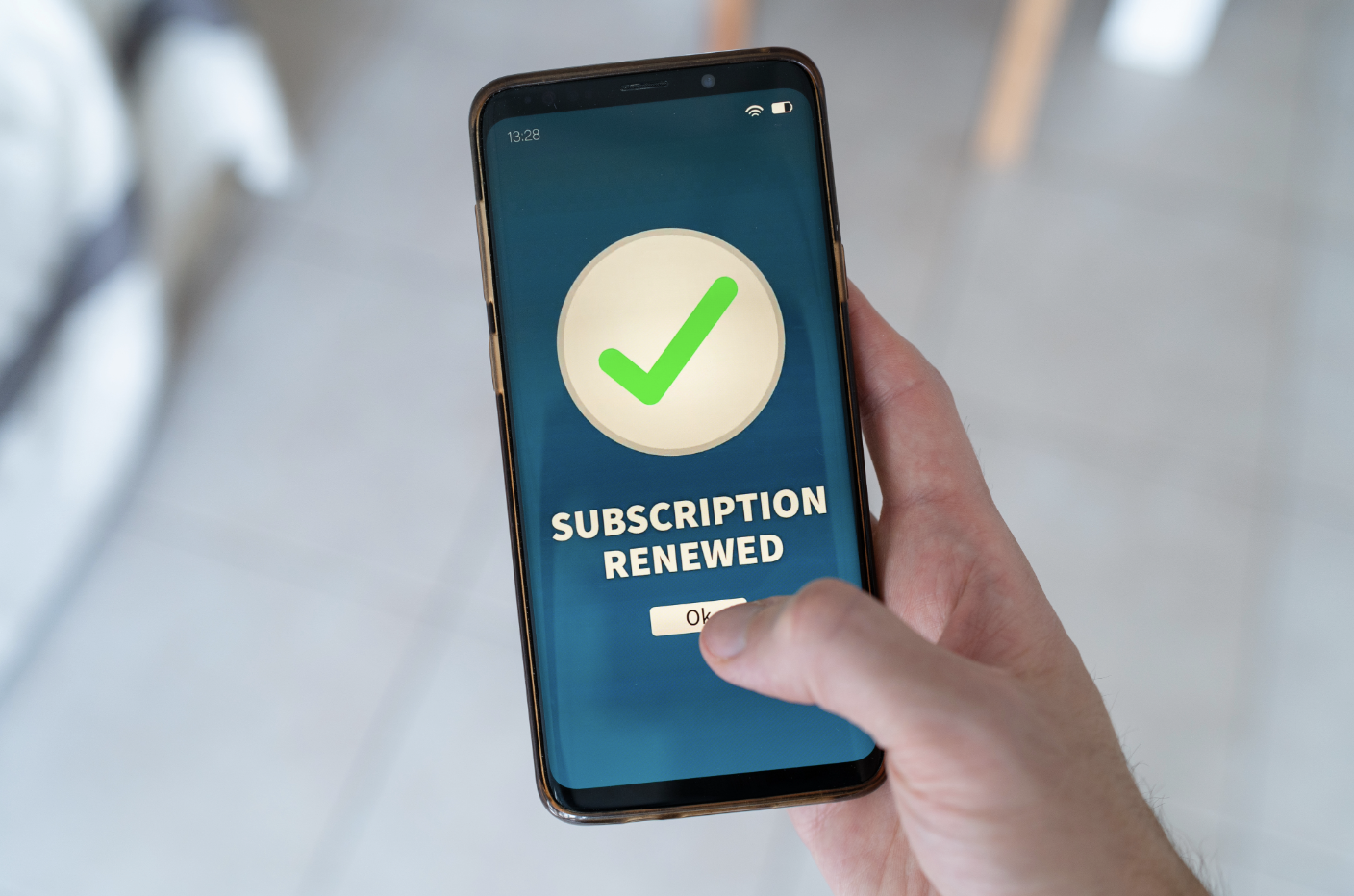Ad budgets spent on Google and Meta aren’t just inefficient - they’re making subscription growth needlessly expensive. Subscription brands outperforming CAC benchmarks are moving to performance-driven channels that plug directly into where potential buyers already spend: their financial apps. This playbook gives you 13 proven strategies - ranging from trial funnel optimization to closed-loop, reward-based targeting inside fintech ecosystems - all backed by hard data and real results from top subscription brands. Here’s what separates scalable subscription growth from the rest.
1. Master the freemium-to-premium conversion funnel
Free trials remain the front line for subscription acquisition, used by half of subscription businesses and delivering conversion rates between 15% and 25%. However simply offering a free trial isn’t enough to fuel a scalable growth engine. To do that, you need to optimize every step of the freemium conversion strategy.
Trial-to-paid conversion rates double when a card is required at signup. Card-required trials set intent and reduce abuse, but need to be paired with a frictionless onboarding experience or risk early drop-off. The optimal trial length sits between 7 and 30 days - short enough to create urgency, long enough for users to hit key “aha moments” that showcase product value.
The structure of your freemium offer matters. Two approaches dominate:
- Feature limitations: Give users unlimited time, but restrict premium features. This builds product familiarity and FOMO for advanced tools.
- Time limits: Offer all features for a limited period. This accelerates discovery and shortens the path to value.
Onboarding sequences are critical. Map out a guided flow that brings new users to their first win fast. Highlight must-have features with contextual prompts or in-app tours. This is where industry leaders stand out: Spotify surfaces curated playlists and social listening on Day 1, while Netflix drives users to start watching immediately, auto-personalizing recommendations with every click.
Reduce trial abuse by monitoring account creation frequency and requiring verified payment methods. Use behavioral triggers to nudge high-intent users before trial expiration.
The best subscription conversion funnels are built on frictionless onboarding, intent-driven trials, and a relentless focus on activating users’ core needs before pitching premium.
2. Unlock first-party purchase data for laser targeting
Traditional demographic targeting leaves growth potential on the table. Subscription brands relying on age, gender, or broad interests end up paying for wasted impressions and guesswork, not real outcomes. First-party data marketing lets you reach buyers based on verified spend.
Kard’s recent streaming service campaign is proof. By shifting to transaction-based targeting, the brand achieved 410% year-over-year growth and acquired 32,300 new subscribers. Instead of chasing lookalikes, Kard’s API identified users who had never subscribed or who had lapsed for more than three months. This laser focus meant every campaign dollar went toward high-intent prospects.
First-party data delivers a 2.9x revenue lift over third-party sources. Rewards-based ads don’t just boost acquisition - they attract competitive switchers. In the streaming example, 19% of new signups came from users who previously subscribed to rival services. Closed-loop attribution is built in. Every reward, offer, or cashback incentive is tracked back to a verified transaction, giving you ROI clarity down to the purchase. There’s no cannibalization: card-linked offers only trigger for new or reactivated users, so your spend isn’t wasted on existing subscribers.
First-Party Data vs. Traditional Targeting

Subscription customer acquisition is no longer about reach, it’s about verified intent, measurable conversion, and outmaneuvering competitors with real purchase data.
3. Build Community-Driven Retention Through Content
Top-performing subscription businesses typically achieve retention rates of 60–70%, and a majority now rely on content and community engagement as primary strategies to defend against churn.
Brands investing in content for their community marketing see 3x more leads than those relying on traditional ads. But the biggest impact comes from building a sense of belonging: a reason for members to stay engaged well beyond the core product.
Winning strategies include:
- Exclusive member content: Early access, behind-the-scenes drops, or expert Q&As give subscribers a reason to stick around.
- User-generated campaigns: Invite members to share their own stories, reviews, or creations turns customers into advocates and makes the brand feel personal.
- Educational webinars: Host live sessions or workshops that deliver ongoing value, deepen product knowledge, and foster real connection.
Peloton’s in-app challenges and live classes drive recurring engagement through community competition and social accountability. Duolingo’s gamified leaderboards and streaks keep language learners coming back, using progress sharing and friendly rivalry to make the experience sticky.
Community-focused content reduces churn, strengthens emotional loyalty, and gives subscribers reasons to participate, not just consume.
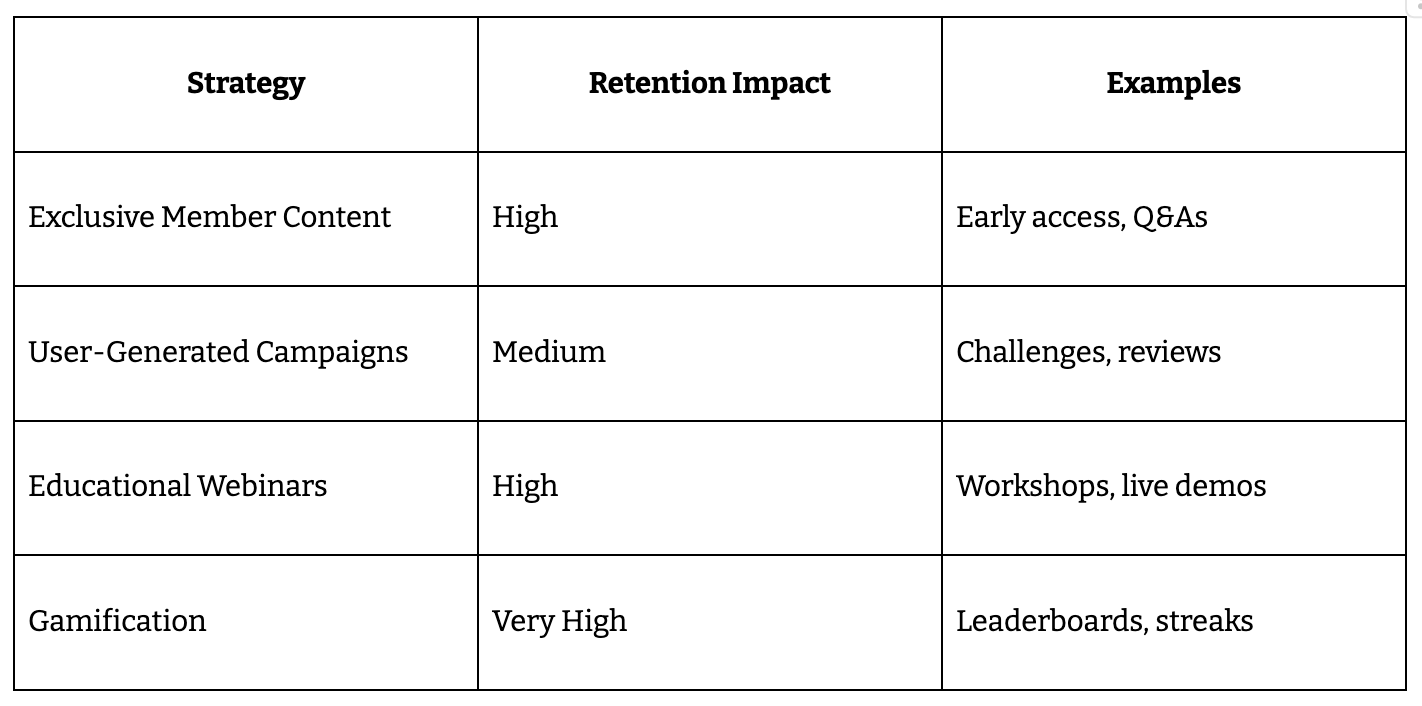
Subscription brands build real stickiness by making members feel seen, heard, and part of something bigger.
4. Optimize pricing psychology with tiered packaging
Tiered subscription pricing is a proven conversion engine. Brands using a 3-tier model see a 40% lift in signups compared to single-price offerings. The psychology behind this is simple: customers want to feel in control, and structured choices guide them toward higher-value plans without feeling pressured.
The “good-better-best” framework is the industry standard. By anchoring the highest-value plan as the point of comparison, the middle tier becomes the natural choice. 60% of customers select the middle option, a classic decoy effect that boosts average order value and overall revenue.
Annual plan optimization is another high-impact lever. When users commit to yearly billing, churn drops by 9.5% compared to month-to-month. Upfront discounts for annual subscriptions are now baseline expectations for subscription businesses.
Key tactics for subscription pricing strategy:
- Structure three clear tiers: basic, most popular (middle), and premium, highlighting the most popular as the default.
- Use anchor pricing: show the premium tier’s price first to make the next tier appear more affordable.
- Offer annual plans with visible savings to incentivize longer commitments.
- Introduce flexible options like pause features, usage-based pricing, or family plans to widen appeal.
- Layer in monthly cashback or loyalty rewards for premium tiers to keep subscribers engaged and prevent cancellations.
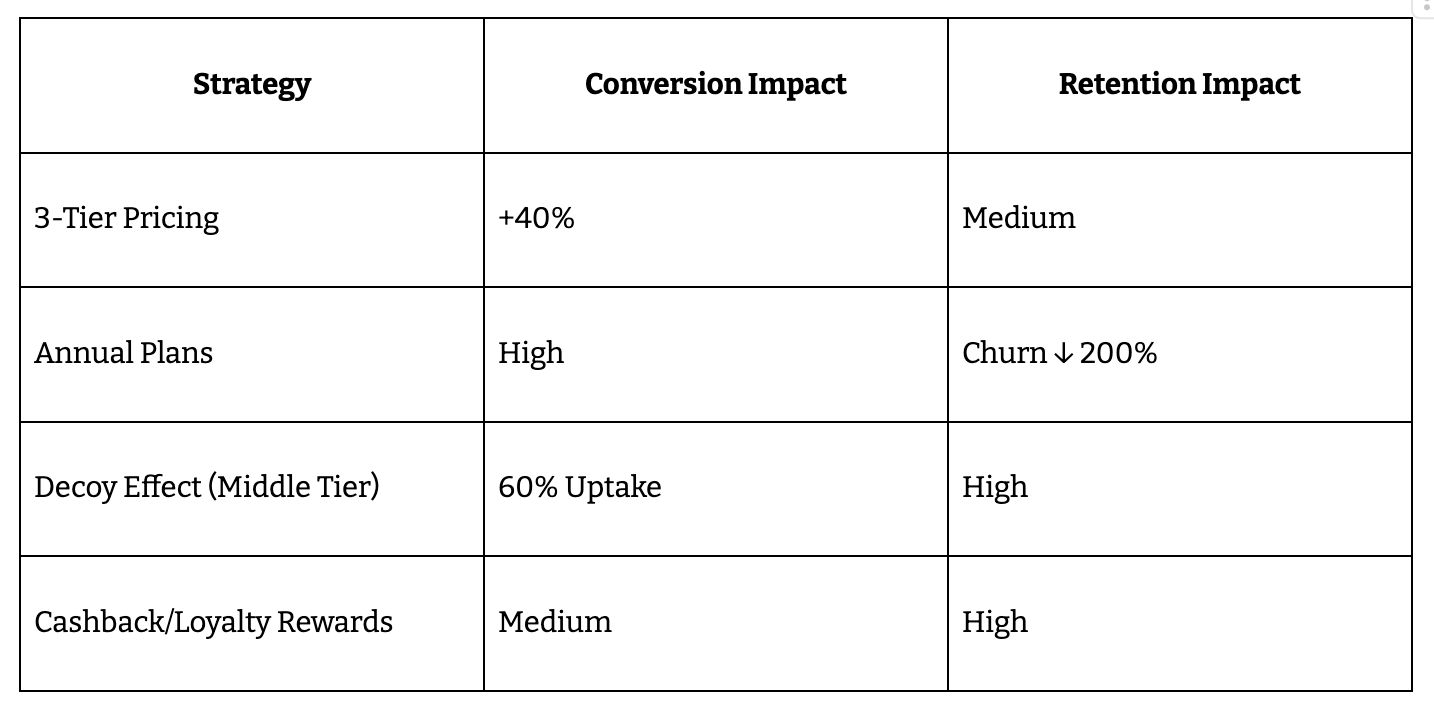
Pricing is leverage. Use it to drive upsells, deepen retention, and make your subscription model irresistible.
A/B test your packaging, headline copy, and feature sets to find the ideal mix. Don’t forget to re-engage lapsed customers (3 to 12+ months) with targeted discounts or limited-time upgrades.
Referral program strategy is one of the fastest ways to scale subscription brands. When engineered for viral growth, referrals turn happy subscribers into your most credible acquisition channel.
Referred customers are more valuable, with a 16% higher lifetime value than average. A well-structured referral program can reduce CAC by 30%, letting you invest more in product and retention instead of auctioning for every new signup.
Double-sided incentives are the driver. When both the referrer and their friend receive value - think cash, credits, or extended trials - referral rates jump by 50%. The best programs let customers choose their reward, aligning with what they value most.
Examples that set the benchmark:
- Dropbox’s storage bonuses fueled explosive viral growth, using a simple “give more, get more” model.
- Airbnb’s dual-sided travel credit not only incentivized sharing but ensured both parties became active users.
Tracking is non-negotiable. Use dedicated links, unique codes, or platform integrations to attribute every referral down to the transaction. Optimize your timing, too. Trigger referral nudges after loyalty milestones or positive product experiences, when subscribers are most likely to share.
Preventing fraud while encouraging genuine referrals means setting clear rules:
- Cap rewards per user
- Monitor for suspicious signups
- Require completed purchases before releasing incentives
Referral rewards strategies:
- Double-sided incentives: both referrer and friend win
- Flexible rewards: cash, credits, free months
- Automated tracking: referral links and codes
- Timing: prompt after high engagement moments
- Fraud controls: reward only after verified activity
Referral program strategy is a proven, scalable lever for viral growth marketing, reducing CAC, and attracting subscribers who stay.
6. Leverage behavioral triggers for retention automation
Retention is earned, not assumed - and behavioral automation is what keeps your subscription brand top of mind and off the churn list. Behavioral email campaigns drive 50% higher open rates than static blasts, delivering the right message at the moment a subscriber is most likely to act.
Automated retention relies on real data, not gut feel. Start by scoring user engagement: track logins, usage frequency, and interaction depth to segment customers by risk level. Then, use this data to flag accounts showing early warning signs, letting you intervene before it’s too late.
The most impactful triggers:
- Usage drops: When activity declines, trigger a personalized email highlighting new features or value reminders.
- Billing failures: Failed payment? Send an immediate, friendly nudge and offer easy ways to update details.
- Feature adoption: If a subscriber hasn’t tried a stickier feature, prompt them with a quick-start guide or exclusive tip.
- Churn prediction: Deploy win-back campaigns with custom offers or loyalty rewards.
Win-back campaigns work, recovering 15% of churned subscribers who’ve left but still show intent. The key is to keep personalizing follow-ups based on real-time engagement and trigger new sequences as behaviors shift.
Scalable retention automation means every subscriber receives proactive, relevant outreach to maximize lifetime value.
7. Scale through strategic partnership marketing
Subscription brands driving retention and acquisition at scale don’t go it alone. The right partnership marketing strategy unlocks new audiences, boosts retention, and slashes customer acquisition costs - especially as traditional ad channels get more competitive and less predictable.
Partnership-driven customers show higher retention rate. Why? Trust transfers from the partner’s audience, and value multiplies when brands combine their strengths. Instead of chasing impressions, you’re delivering relevance and solving more of your customer’s needs in one motion.
Co-marketing campaigns are also proven to reduce CAC by up to 40%. But only if they’re unique and feel authentic to both audiences. Think things like joint product launches, collaborative webinars, or cross-promoted challenges. Integration partnerships are driving 25% of B2B SaaS growth, letting users connect tools they already love and lowering the friction of switching or signing up.
Bundle offerings take it further. By packaging complementary products or services, you drive up perceived value while splitting the acquisition cost. Subscription box brands have mastered this: think of a beauty box including both a skincare brand and a wellness snack, or a SaaS bundle that pairs project management with time tracking.
Effective scaling tactics:
- Co-marketing: joint content, webinars, cross-promos
- Integration: seamless product connections, shared user onboarding
- Bundles: multi-brand offers, split costs, higher value perception
- Value-add: solve more problems together, deepen loyalty
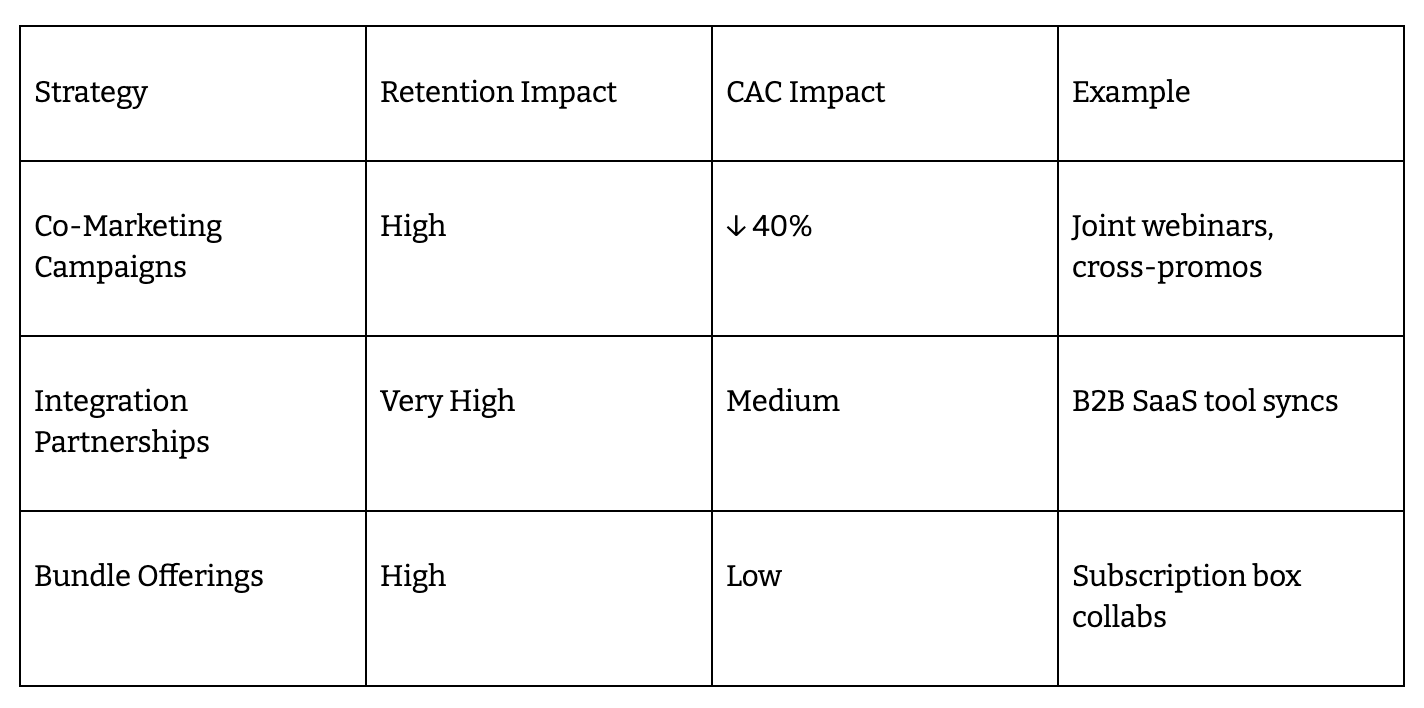
Subscription growth leaders treat partnerships as a core lever for value and reach.
8. Implement social proof at scale
Social proof is a conversion lever subscription brands can’t afford to ignore. Data proves it: social proof can drive a 15% lift in conversions, while real-time activity displays alone boost signups by 30%.
The most effective strategies go beyond static testimonials. Modern subscription brands use real-time signup notifications - subtle pop-ups showing recent joins or purchases - to signal momentum and credibility. Customer count displays (“13,204 subscribers and counting”) reinforce that your offer is trusted by a crowd, not just early adopters.
Showcasing user-generated content is a proven way to drive engagement, with brands seeing 2.4x higher interaction rates. Curate customer reviews, unboxing videos, or social media shout-outs directly on your sign-up and checkout pages. Authentic experiences from real users crush polished brand messaging every time.
Testimonials are still crucial, but context matters. Integrate them at friction points in the journey - on pricing pages, near checkout, or during free trial sign-up. Choose testimonials that address common hesitations: “I switched from monthly to annual after seeing the value” or “Support was fast and easy.”
Optimizing trust signals is key for subscription hesitancy. Layer verified badges, secure payment icons, and money-back guarantees near calls-to-action to remove doubt at decision moments.
Social proof strategies:
- Real-time signup notifications
- Customer count displays
- Curated user-generated content
- Testimonials near decision points
- Trust badges and secure payment signals
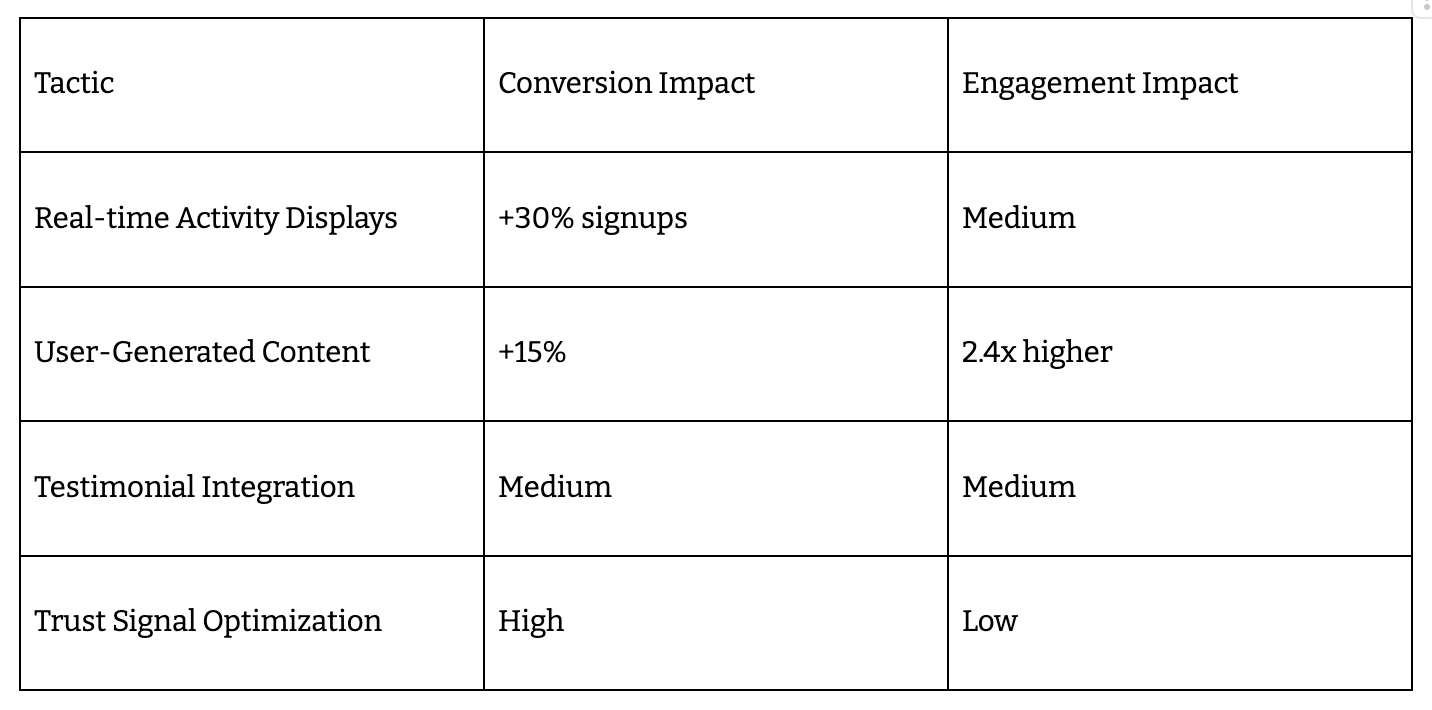
Relentless social proof makes your subscription brand the obvious, trusted choice.
9. Master mobile-first subscription experience
Mobile is now the primary battleground for subscription growth: 65% of all subscription signups originate on smartphones. If your mobile subscription optimization isn’t airtight, you’re losing high-intent shoppers to clunky forms and friction-filled checkouts.
Mobile checkout abandonment drops by 35% when flows are designed for speed and simplicity. Remove multi-step forms, minimize required fields, and enable one-tap payment options like Apple Pay or Google Pay. Prioritize autofill and biometric authentication so users can subscribe in seconds, not minutes.
App-based subscriptions are the engagement engine: subscribers acquired through your app show 3x higher engagement than web signups. Leverage app-specific retention features that other channels can’t match:
- Push notifications for renewal reminders, feature drops, and personalized offers
- Offline access to premium content, ensuring value even without signal
- Mobile-only content or perks that reward app loyalty
Progressive web apps (PWAs) bridge the gap between mobile web and native apps. They load instantly, work offline, and deliver a frictionless experience without forcing a download - crucial for capturing users who hesitate to install another app.
Responsive design is non-negotiable. Every page, from pricing to onboarding to account management, must look and function perfectly on any device. Test across screen sizes, eliminate horizontal scroll, and keep CTAs thumb-friendly.
Responsive design must-haves:
- Simplified, one-tap checkout flows
- Fast-loading, offline-ready PWAs
- Push notifications and mobile-only perks
- Payment options built for mobile wallets
- Responsive, device-agnostic UX

Every tap, swipe, and notification is a chance to convert - and keep - your most valuable subscribers.
10. Use influencer marketing for niche community building
Subscription brands win when they stop chasing broad reach and start activating real engagement inside niche communities. Influencer marketing for subscriptions isn’t about celebrity endorsements - it’s about trust, relevance, and measurable ROI.
Micro-influencers, with their smaller but highly engaged audiences, drive 60% higher engagement rates than macro-influencers. Their content feels personal and authentic, making them powerful advocates for subscription services that thrive on loyalty and word-of-mouth.
Influencer partnerships focused on specific interests - think fitness, coding, vegan cooking, or streetwear - raise customer lifetime value by 40%. These creators spark conversations, not just impressions, and their recommendations translate directly into trial signups and recurring revenue.
While micro-influencers excel at building credibility and fostering direct conversations, macro-influencers can amplify brand visibility fast. For most subscription brands, a blended approach - using micro-influencers for depth and macros for broader awareness - yields the strongest results.
Long-term partnerships outperform one-off campaigns. Ongoing collaborations build deeper narratives and show genuine loyalty, which new subscribers recognize and trust. Authenticity always wins over reach; real product usage and honest feedback outperform staged promotions every time.
- Micro-influencers: 60% higher engagement, deeper trust
- Niche targeting: 40% LTV lift
- Partnerships: Long-term > one-off
- Authentic reviews > scripted ads
- CAC reduction: 25% average via influencer channels
Use unique referral codes, tracked affiliate links, and transparent dashboards to monitor conversions, retention, and CAC reduction. Invest in relationship management, too. Treat creators as partners, not just channels, and your subscription brand will grow at the heart of the communities that matter most.
11. Implement dynamic pricing and personalization
Gen Z and Millennial consumers expect offers that actually fit their needs, not generic discounts. And that’s made static pricing a relic. Subscription brands aiming for real growth now deploy dynamic pricing strategies powered by behavioral data and AI-driven personalization.
Brands see a 20% jump in conversions when subscription rates or discounts shift based on user behavior, lifecycle stage, or purchase history. Dynamic offers go further, reducing churn by 15% - retaining subscribers by surfacing the right deal at the moment they’re likely to leave.
Modern subscription marketers use AI to predict individual churn risk and trigger targeted incentives before it’s too late. Examples include surfacing a limited-time discount when usage drops, or offering a unique bundle to high-value subscribers at renewal. AI-driven personalization doesn’t just boost engagement (up 40% on average), it gives each subscriber a reason to stay.
Key tactics for dynamic pricing and personalization:
- AI-powered churn prediction to trigger retention offers in real time
- Usage data to customize discount timing (e.g., milestone unlocks, re-engagement rewards)
- Segmentation by cohort, loyalty, or plan type for hyper-relevant pricing
- Automated A/B testing to optimize which offer drives the most conversions
- Privacy-first personalization, using first-party data transparently and with clear subscriber consent
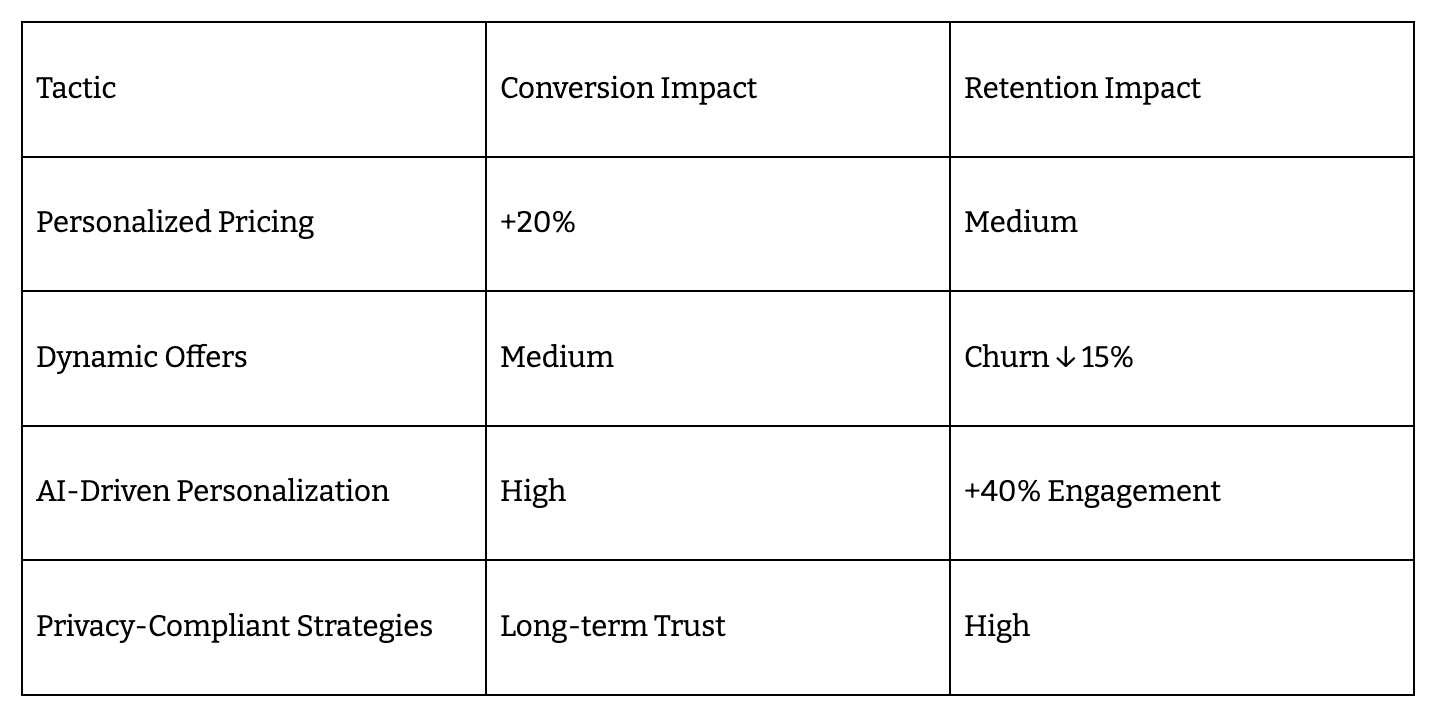
Smart subscription brands use real-time signals, predictive analytics, and privacy-first personalization to maximize both revenue and loyalty.
12. Build global expansion through localization
Subscription brands aiming for global subscription expansion need more than just translation - they need a full subscription localization strategy that respects currency, culture, and compliance. Localized pricing alone can boost international conversions by 25%.
Letting subscribers pay in their preferred currency reduces cart abandonment by 20% and helps new markets trust your brand from the first checkout. Consider adopting regional pricing strategies that reflect local purchasing power, rather than simply converting your US price.
Cultural adaptation also drives retention. Adjust your onboarding flows, rewards, and even product features to match local norms and values - Understand local payment preferences, whether that means supporting e-wallets in Southeast Asia or bank transfers in Europe.
Regulatory compliance isn’t optional. Every market has its own requirements - GDPR in the EU, CCPA in California, local data sovereignty laws elsewhere. Align your data practices and user consent flows before launch to avoid fines and build trust.
Language localization goes beyond basic translation. Adapt CTAs, notifications, and customer support scripts to sound native, not automated. Partner with local brands or fintechs to embed your offer in trusted ecosystems and accelerate adoption.
Localization strategies:
- Localized pricing and multi-currency checkout
- Regional payment options (e-wallets, bank transfers)
- Tailored onboarding and reward experiences
- Compliance with local data/privacy laws
- Cultural content adaptation and local partnerships
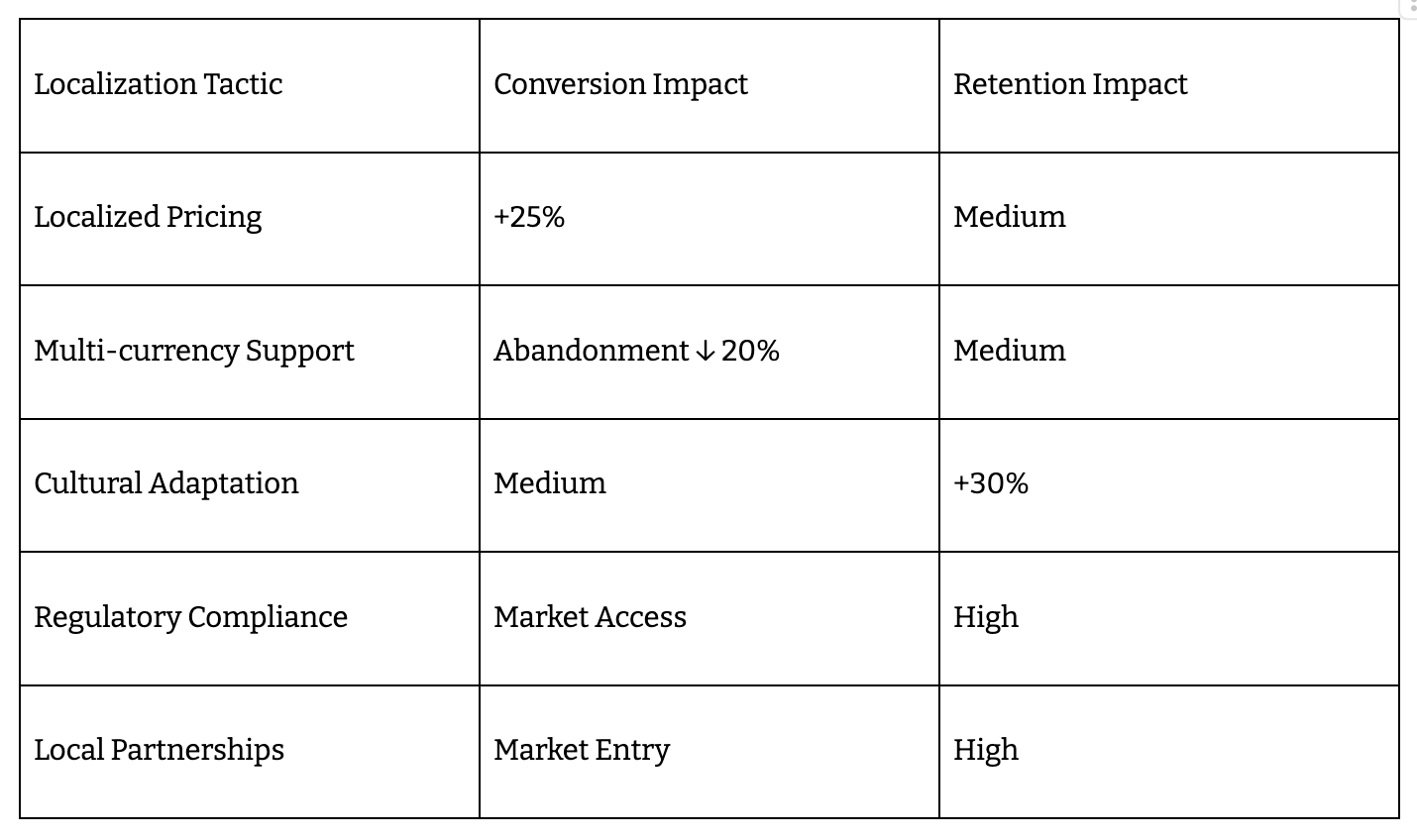
Global expansion rewards brands that meet customers where they are - in their language, currency, and culture.
Final Words
Building a high-performing subscription service marketing engine means activating every lever - trial optimization, first-party data, content-driven retention, tiered pricing, and referrals.
The most successful brands move beyond generic tactics, linking precision targeting with personalized retention and conversion-focused incentives.
With strategies like behavioral triggers and influencer-driven community, it’s possible to boost each stage of the funnel and reduce churn.
Kard’s results - 410% subscriber growth through data-powered rewards - prove the upside is real.
Embrace a test-and-learn mindset, and subscription service marketing can deliver sustainable, compounding growth.
FAQs: subscription marketing strategies
Q: What’s the most important subscription marketing strategy to start with?
A. Start with first-party data targeting for acquisition. Reaching buyers based on actual transaction history delivers higher-intent signups and better retention than traditional demographic or interest-based ads. This approach maximizes your marketing budget from day one and builds a foundation for every other growth strategy.
Q: How much budget should I allocate to subscription marketing?
A. The most successful brands invest 20–40% of their total marketing budget into subscription growth channels. Prioritize performance-based campaigns and retention automation over one-off ad bursts. As you scale, reinvest savings from reduced CAC into partnership programs, referral incentives, and loyalty upgrades.
Q: What metrics should I track for subscription marketing success?
A. Focus on customer lifetime value (LTV), churn rate, acquisition cost (CAC), and paid conversion rate. Track trial-to-paid conversion, annual plan adoption, and referral-driven growth. Attribution should be closed-loop - measure actual revenue from each channel, not just clicks or impressions.
Q: How long does it take to see results from these strategies?
A. Expect early traction in 30–60 days with free trials, referral programs, or targeted reward offers driving the first cohort of signups. Substantial improvements in retention, LTV, and churn typically show up after 3–6 months of consistent optimization and automation.
Q: Can these strategies work for B2B subscription services?
A. Yes - B2B SaaS and business platforms benefit from the same tactics: tiered pricing, referral incentives, content-driven onboarding, and partnership marketing. Transaction-based targeting and closed-loop attribution are especially impactful in long-sales-cycle B2B environments.
Q: How do you market a subscription service?
A. Marketing a subscription service starts by identifying your target audience, using free trials or exclusive offers, and optimizing onboarding. Leverage first-party data, referral programs, community content, and pricing psychology to drive conversions and long-term retention.
Q: Do subscription services make money?
A. Subscription services generate recurring revenue when users find ongoing value. Companies like Netflix and Spotify succeed by combining compelling offers, personalized experiences, and continuous customer engagement, which often delivers higher profitability than one-time sales.
Q: What is an example of a subscription-based service?
A. An example of a subscription-based service is Spotify, where users pay a monthly fee for unlimited music streaming. Other leading examples include Netflix, Birchbox, Blue Apron, and Peloton.
Q: What are the three types of subscriptions?
A. The three types of subscriptions are replenishment (e.g., Dollar Shave Club), curation (e.g., Birchbox), and access (e.g., Netflix), each designed to meet different consumer needs and drive habitual usage.
Q: What are some effective subscription promotion ideas?
A. Effective subscription promotion ideas include offering free trials, limited-time discounts, referral rewards, bundled services, and early access to new features for members. Micro-influencer campaigns and community-driven perks also boost acquisition and retention rates.
Q: What metrics should I track for subscription marketing success?
A. Key metrics for subscription marketing include monthly recurring revenue (MRR), customer lifetime value (LTV), churn rate, trial-to-paid conversion, customer acquisition cost (CAC), and retention rates.
Q: How long does it take to see results from subscription marketing strategies?
A. Most subscription marketing strategies start delivering measurable results within one to three billing cycles, especially when paired with strong onboarding, targeted campaigns, and optimized pricing.
Q: Can these strategies work for B2B subscription services?
A. Yes, these strategies work for both B2C and B2B subscription businesses. Personalization, content, partnerships, and data-driven targeting are effective for SaaS, professional services, and software platforms.
Q: What’s the most important subscription marketing strategy to start with?
A. The most impactful strategy is optimizing the free trial and onboarding funnel, as early customer engagement and “aha moments” drive higher conversion and retention rates across all subscription business models.
